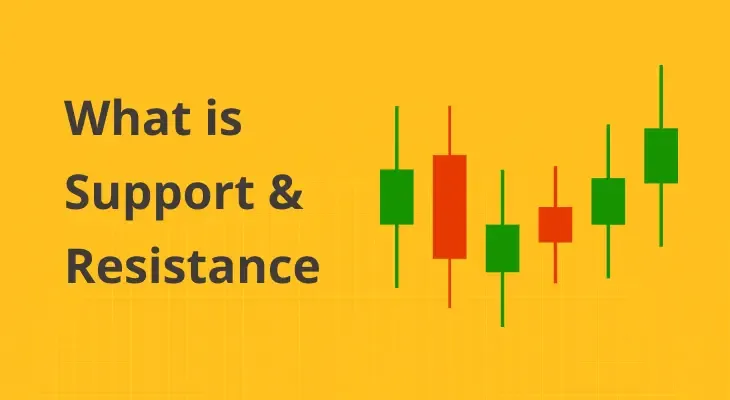
Demystified: Support & Resistance in Stocks
As you go deeper in your understanding of the technical analysis of stocks, you will often come across the terms – ‘Support’ and ‘Resistance’. Support and resistance are two important concepts that can help you make informed stock trading decisions. Support refers to a price level below which a stock is unlikely to fall, while resistance refers to a price level above which a stock is unlikely to rise. These levels are determined by market forces such as supply and demand and can be influenced by a variety of factors, including market sentiment, news events, and economic indicators.
Support and resistance indicators help in identifying potential buying or selling opportunities. For example, if a stock's price falls to a support level, it may be viewed as a buying opportunity, as traders believe that the stock is unlikely to fall further. Conversely, if a stock's price rises to a resistance level, it may be viewed as a selling opportunity, as traders believe that the stock is unlikely to rise further.
This article will help you understand the meaning of support and resistance and give you all the information that you need to effectively use the concept and enjoy a more rewarding trading experience.
What is support and resistance?
Support
Support is a useful concept in technical analysis that helps traders determine the price level at which a stock is likely to experience increased buying pressure, preventing it from falling further. In general, support levels are areas where the demand is expected to be strong enough to overcome supply, resulting in a potential price bounce. Traders identify support levels by analysing past price data, looking for areas where prices have previously reversed or bounced back after declining. Once a support level is identified, you can use it to determine the entry point for buying security, expecting that the price will rebound from the support level.
It's important to note that support levels are not always exact prices but can be a range of prices. This is because support levels can be influenced by a variety of factors, including market sentiment, news events, and economic indicators. In addition, support levels can be breached, indicating a potential change in market direction. Your trading strategy must be altered in such a case, as this could signal the beginning of a downtrend.Resistance
Resistance, on the other hand, is a technical analysis term used in trading to describe a price level at which a stock or other asset tends to stop rising and start falling again. Resistance levels are areas where traders expect supply to be strong enough to overcome demand, resulting in a potential price drop. Traders identify resistance levels by analysing past price data, looking for areas where prices have previously reversed or bounced back after increasing. Once a resistance level is identified, you can use it to determine your exit points for selling a security, with the expectation that the price will reverse from the resistance level.
Just like support levels, resistance levels can be a range of prices as well. Additionally, resistance levels can also be breached, indicating a potential change in market direction. You must be prepared to adjust your strategy if resistance levels are broken, as this could signal the beginning of an uptrend.
Important Factors to Note
Now that you know the meaning of support and resistance and understand the basics of the concept let us take a look at some of the other key factors that are associated with it.
Trendlines
Round Numbers
Moving Averages
Trading Ranges
Support and Resistance Reversals
Wrapping It Up
In summary, support and resistance are two important concepts in trading that help traders make informed decisions. Support refers to a price level at which an asset is unlikely to fall further, while resistance refers to a price level at which an asset is unlikely to rise further. Traders use these levels to identify potential buying and selling opportunities, but you should always consider your risk tolerance, and conduct thorough research and analysis before making any trading decisions.
FAQ
Why are support and resistance levels important for traders?
Support and resistance levels are important because they help identify potential price reversals and make informed decisions about when to buy or sell. By understanding where buyers and sellers are most likely to enter or exit the market, you can anticipate potential market movements and adjust your strategy accordingly.
How are support and resistance levels identified?
Support and resistance levels are identified by analysing past price data, and looking for situations where prices have previously reversed after declining or increasing. These levels can be further confirmed by looking at trading volume and other technical indicators.
How can you use support and resistance levels to manage risk?
Support and resistance indicators can be used to manage risk by setting stop-loss orders at key levels. By placing a stop-loss order just below a support level or just above a resistance level, you can limit your potential losses in case the market moves against the expected position.
Can support levels become resistance levels and vice versa?
Yes, it is possible for a support level to become a resistance level and vice versa. This can occur when the market dynamics change, and traders shift their strategy accordingly.


